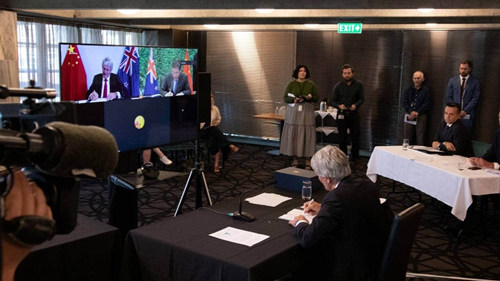The first free trade agreement signed by China and developed countries has been upgraded! On January 26, the news that China and New Zealand officially signed the upgrade protocol of the free trade agreement quickly flashed the screen.
New Zealand Prime Minister Jacinda Ardern specially released a video to express his joy at the signing of the protocol. Zhao Lijian, spokesman of the Chinese Ministry of Foreign Affairs, then expressed China’s appreciation for Prime Minister Ardern’s relevant statement and was pleased with the formal signing of the China-Singapore Free Trade Agreement escalation protocol.
After three years of negotiations, a 13-year-old free trade agreement has been upgraded. At the beginning of the New Year in 2021, the “New Year’s Gift Pack” jointly sent by China and New Zealand is really weighty.
The benefits of real gold and silver
Data shows that China has signed 19 free trade agreements with 26 countries and regions. Among them, the status of China-singapore Free Trade Agreement is very special.
China-Singapore Free Trade Agreement is the first free trade agreement signed by China with developed countries. It is also the first bilateral comprehensive free trade agreement in China covering many fields such as trade in goods, trade in services, investment and so on.
It is no exaggeration to say that the China-Singapore Free Trade Agreement has written a win-win story.
According to the data of China’s Ministry of Commerce, since the signing and entry into force in 2008, the bilateral trade volume of China and New Zealand has increased from $4.4 billion in 2008 to 18.1 billion US dollars in 2020, with an average annual growth rate of 14%.
China has become New Zealand’s largest trading partner and second largest source of foreign investment for many consecutive years.
The speed of bilateral economic and trade development exceeds the original framework when the China-singapore free trade agreement was signed.
It has become the original intention of China and New Zealand to negotiate the upgrading of the free trade agreement to ensure that the agreement keeps pace with the development of the times.
In November 2019, China and New Zealand announced the completion of the negotiation of the escalation of the free trade agreement.
In the words of Fu Enlai, New Zealand’s ambassador to China, “This upgrade ensures that the New China Free Trade Agreement keeps pace with the times and continues to benefit exporters.”
“A more ambitious, modern, high-quality free trade agreement.” On January 26, the WeChat official account of the New Zealand Embassy in China immediately issued an article to positively evaluate the upgraded China-Singapore Free Trade Agreement.
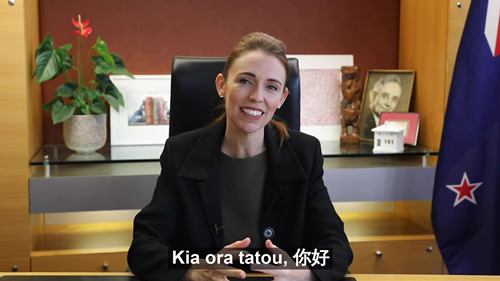
The upgrade protocol can be said to be full of dry goods, and each of which is a real benefit:
China and Singapore have achieved a high level of liberalization in the field of goods trade market access.
China has implemented zero tariffs on 100% of products imported from China, and China has implemented zero tariffs on 97% of products imported from China.
China imposes zero tariffs on some wood and paper products in New Zealand, and New Zealand’s dairy imports will be lifted in the next three years.
You should know that from January to November 2020, China imported a total of 306,700 tons of infant formula, of which 63,800 tons, accounting for 20.8%, ranked second in China’s infant powder imports, second only to the European Union.
China Airlines, Construction, Maritime Transportation, Finance and other fields will be greatly opened to New Zealand, and Chinese enterprises can carry out human resources, tourism development and other consulting services in New Zealand.
The new side will confirm that the threshold for Chinese investment review will be relaxed, and Chinese investors will be given the same review threshold treatment as members of the Comprehensive and Progressive Trans-Pacific Partnership Agreement (CPTPP).
In the future, Chinese government investors will be exempted from censorship if they invest no more than S$100 million in New Zealand and non-governmental investors invest no more than S$200 million. .
The new side doubled the employment quota for Chinese teachers and Chinese tour guides with large numbers of Chinese citizens, from 150 and 100 to 300 and 200 respectively.
The new e-commerce chapter is a big highlight, which means that people of the two countries will buy each other’s goods more directly.
In the past two years, the news of “selling for two hours, 250,000 boxes of New Zealand pure milk have been snapped up” on Chinese e-commerce platforms is common.
From this, we can imagine how much e-commerce space the upgrade agreement will open up for the two countries.
As Bai Ming, deputy director of the International Market Research Institute of the Research Institute of the Ministry of Commerce of China, said that the upgrading of the free trade agreement between China and Singapore will promote the two sides to further tap the potential of economic and trade cooperation, deepen practical cooperation in various fields, and promote the economic recovery and development of the two countries under the epidemic situation.
New Zealand exporters “save a sigh of relief”
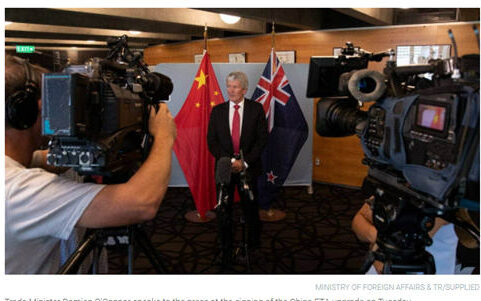
New Zealand has long been looking forward to the implementation of China and New Zealand’s “New Year gift bag”.
A study by Murat Unger, a scholar at the University of Otago in New Zealand, puts the importance of the China-Singapore Free Trade Agreement to the height of affecting New Zealand’s economic development.
According to the data model established by the author in New Zealand’s Why New Zealand Gets from the China-Singapore Free Trade Agreement: Two Counterfactual Analysis, if New Zealand does not sign the China-Singapore Free Trade Agreement, its exports to China will be greatly reduced.
The article believes that in the current stage of economic recovery, it is necessary for New Zealand to promote the implementation of export commodity diversification initiatives, but while developing a diversified foreign trade pattern, it should not reduce economic and trade exchanges with China, but should expand the scale of existing trade agreements or sign new bilateral and multilateral agreements.
Therefore, it is not difficult to understand why New Zealand, from the Prime Minister to the head of the trade department, from industry organizations to enterprises, has been unanimously “liked” after the signing of the upgrade protocol.
New Zealand’s Minister of Trade and Export Growth O’Connor said at a press conference after the signing of the upgrade protocol that the upgrade means that the China-Singapore Free Trade Agreement will continue to enter into force for the next decade, “This will modernize the free trade agreement we signed in 2008 and keep up with the times.
The protocol provides real opportunities for exporters. “
Ten years ago, some issues surrounding trade were not so complicated, and this agreement enabled us to move forward, especially in the field of services.”
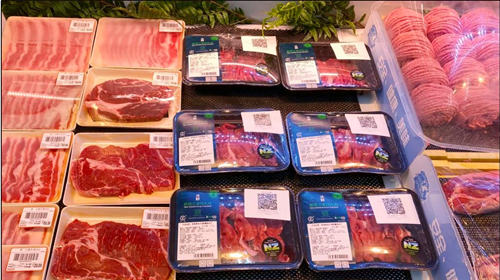
Catherine Beard, executive director of ExportNZ, said that the agreement would relieve “some exporters”. She said that the agreement “will bring great benefits to our exporters of perishable commodities, such as seafood, dairy products, forestry and other primary industries.”
Donald McKinnon, chairman of the New Zealand-China Relations Promotion Committee, believes that New Zealand exporters will benefit from simplification of customs procedures and increased transparency after the signing of the escalation protocol to the two-state free trade agreement.” The upgrade protocol will ensure that New Zealand remains flexible and competitive in our largest and most important trading market.”
“This shows that trade liberalization is still possible even in the context of a global pandemic, and that New Zealand and China can pursue mutually beneficial economic relations, despite differences between us,” said Philip Gregan, president of the New Zealand International Business Forum.
Phil Taylor, president of the New Zealand Forest Owners Association, said the agreement would benefit the New Zealand forestry industry “immediately”.
The “New Year’s gift bag” jointly sent by China and New Zealand not only gives New Zealand exporters a sigh of relief, but also makes the world see rare certainty in the global economic and trade pattern that is being shaken and restructured.
As the first free trade agreement signed between China and developed countries, the China-singapore free trade agreement has been given some vane significance.
At the beginning of the signing of the 2008 agreement, its “model effect” was generally optimistic.
It encourages China’s other trading partners, especially developed countries, to handle China’s economic and trade affairs in a more rational manner, strive for more cooperation and mutual benefit, and create less and intensify trade frictions.
Such a “model effect” also applies today. Shen Yujia, an associate researcher at the School of International Relations of Sichuan University, said that China is currently negotiating the upgrading of free trade agreements with some developed countries, and the upgrading of the China-Singapore free trade agreement will prompt policymakers in some countries to re-examine their negative role in excessively binding economic and trade policies with political policies.
“The period of centralized release of China’s opening-up achievements”
To understand the profound meaning of the “New Year’s gift package” of the China-Singapore Free Trade Agreement upgrade protocol, we also need to look at it from a larger international background.
In recent years, the trend of trade protectionism and unilateralism has risen around the world, and the epidemic has intensified the trend of counter-globalization.
However, it is also because of the impact of the epidemic on economic and trade activities and industrial chain that countries are more aware that openness, tolerance, working together is the only way to tide over difficulties.
The signing of the escalation protocol of China-singapore free trade agreement is another action of China to support free trade and multilateralism.
On November 15, 2020, after eight years of tortuous negotiations, the Regional Comprehensive Economic Partnership Agreement (RCEP) was officially signed, and a world’s largest free trade area covering a population of 2.2 billion and a GDP of $26.2 trillion in member countries was established.
On November 20, in APEC At the 27th informal meeting of the leaders of the organization, China sent a positive signal that China was considering joining the Comprehensive and Progressive Trans-Pacific Partnership Agreement (CPTPP); on December 30, China-EU leaders jointly announced the completion of the China-EU investment agreement negotiations on time…
In Bai Ming’s view, China has used this series of actions to show the world that the door of China’s opening up to the outside world will not be closed, but will only open wider and wider under the new development pattern.”
Several years of efforts have yielded fruitful results, and this period has become a period of centralized release of the fruits of China’s opening up to the outside world. China’s opening up to the outside world has climbed to a new height.
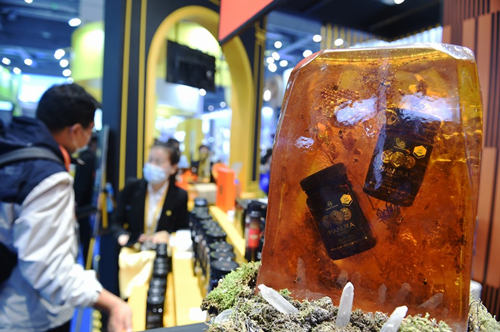
As the door of China’s opening up is getting wider and wider, the list of Westerners who cast a “vote of confidence” in the Chinese market is also getting longer and longer–
Ge Guorui, chairman of the American Chamber of Commerce in China, said recently that 70% of the nearly 1,000 U.S.-funded enterprises under the U.S. Chamber of Commerce in China have no plans to move out of the Chinese market at all, and business will continue to be the ballast of U.S.-China relations.
According to the latest survey of the European Union Chamber of Commerce in China, 62% of EU enterprises in China expressed their willingness to increase investment.
Woodke, chairman of the European Union Chamber of Commerce in China, said recently: “Europe needs to get out of complacency and try to learn from China.
If China wins, we will also win. China’s economy contributes 30% of global growth every year. It is very important for enterprises to participate in this market.


